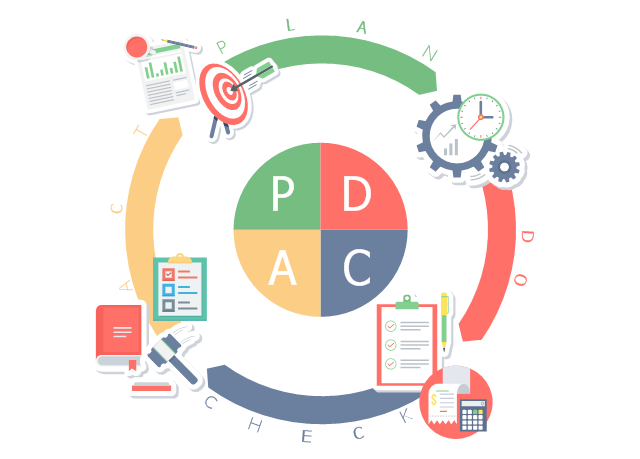What does ISO 14001 do?
The ISO 14001 has become the international standard for designing and implementing an environmental management system. The standard was published by ISO (International Organization for Standardization), an international body that creates and distributes standards that are accepted worldwide. The most recent version of the environmental management system requirements was published in 2015, and is known as “ISO 14001: 2015”. The norm was agreed upon by a majority of member countries before being published and updated, and as such it has become an internationally recognized norm accepted by a great majority of countries throughout the world.
What is an Environmental Management System?
An environmental management system, often called EMS, is made up by policies, processes, plans, practices and records that define the rules that govern how your company interacts with the environment. This system needs to be adapted to your particular company, because only your company will have the legal requirements and the exact environmental interactions that correspond to your specific business processes. However, the requirements of ISO 14001 provide a framework and guidelines for creating your own environmental management system so that you do not miss important elements that are needed for an EMS to succeed.
What is ISO 14001 about?
The ISO 14001 structure is divided into ten sections. The first three are introductory, and the last seven contain the requirements for the environmental management system. Here is explained what the seven main sections are about:
Section 4: Context of the organization – This section deals with the requirements to understand your organization to implement an EMS. It includes the requirements to identify internal and external problems, identify the stakeholders and their expectations, define the scope of the EMS and identify the processes necessary for the EMS.
Section 5: Leadership – Leadership requirements cover the need for top management to be critical in the implementation of the EMS. Top management must demonstrate its commitment to the SGA by ensuring environmental commitment, defining and communicating environmental policy and assigning roles and responsibilities throughout the organization.
Section 6: Planning – Top management should also plan the ongoing work of the SGA. The risks and opportunities of the EMS must be evaluated in the organization, identify the environmental objectives of improvement and make plans to achieve these objectives. In addition, it is necessary for the organization to evaluate all the ways in which the organizational processes interact and affect the environment, as well as the legal and other commitments that are required for the organization.
Section 7: Support – The support section deals with the administration of all resources for the SGA, and also includes the requirements on competence, knowledge, communication and control of the documented information (the documents and records required for their processes).
Section 8: Operation – The operation requirements address all aspects of the environmental controls needed by the organizational processes, as well as the need to identify possible emergency situations and plan responses so that you are prepared to respond in the event of an emergency.
Section 9: Performance Evaluation – This section includes the necessary requirements to ensure that you can control that your EMS is working well. It includes the control and measurement of its processes, the evaluation of environmental compliance, internal audits and the continuous review of the management of the GHS.
Section 10: Improvement – This last section includes the necessary requirements to improve your EMS over time. This includes the need to evaluate the non-conformity of the process and take corrective measures for the processes.
These sections are based on a Plan-Do-Check cycle, which uses these elements to implement changes within the organization’s processes to drive and maintain improvements within the processes.

